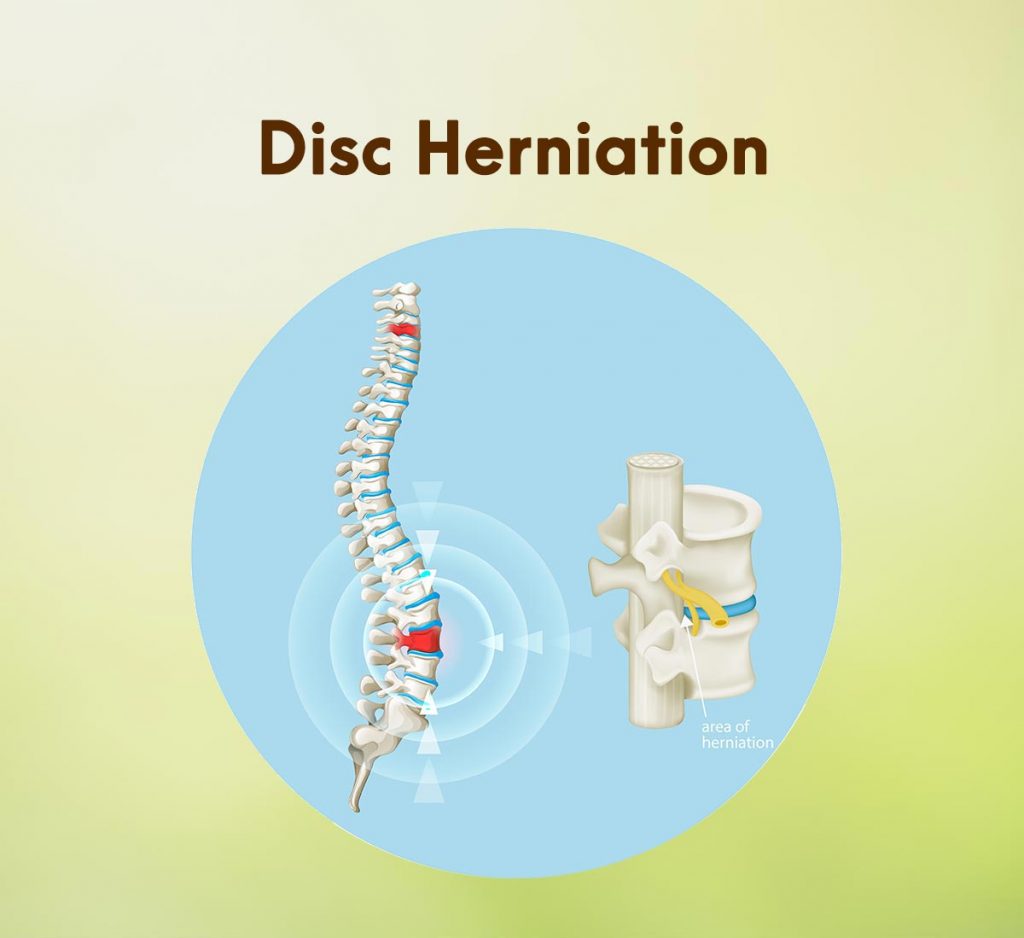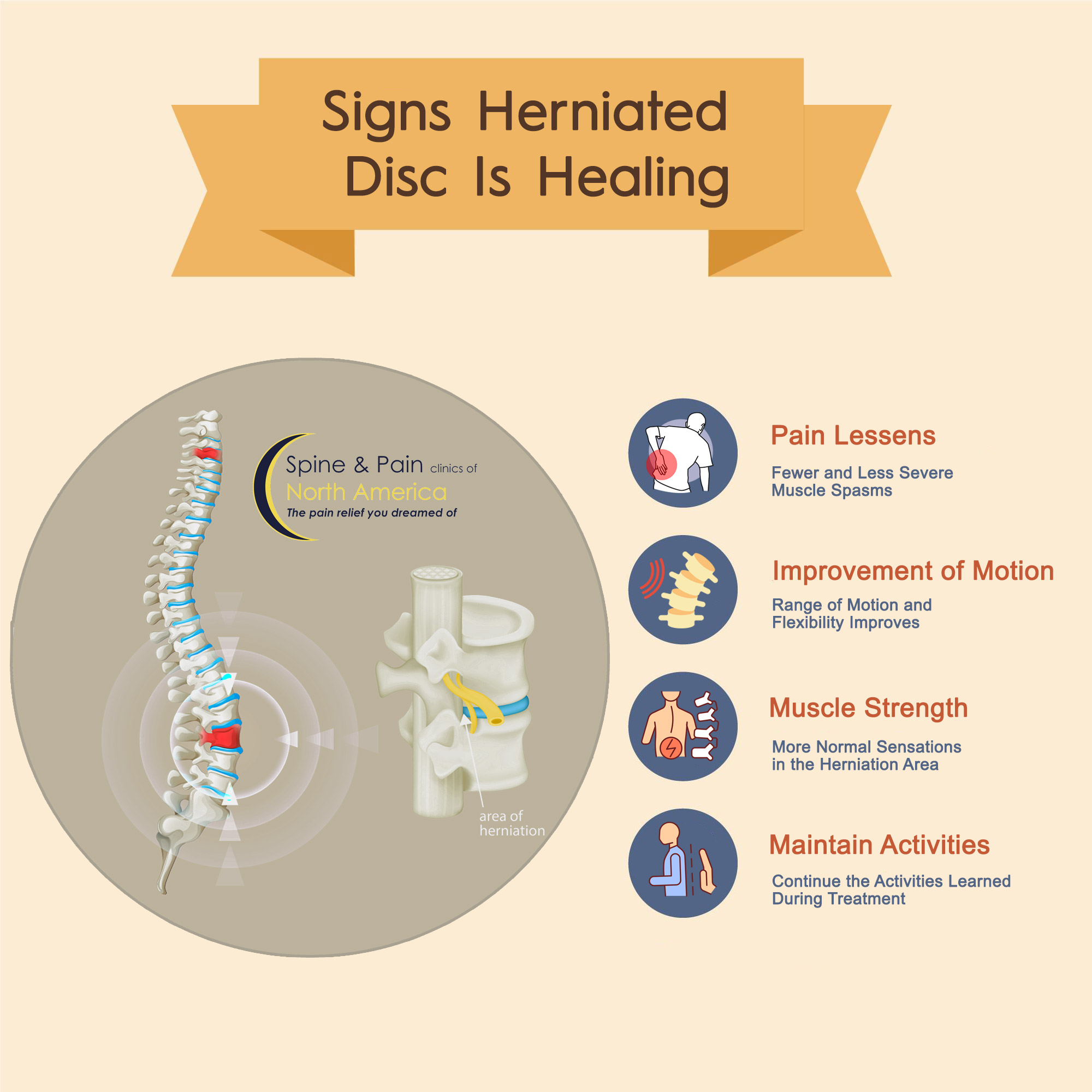Table of Contents
- Herniated Disc Stages of Healing
- Healing Process Unique to Each Person
- How to Recover From a Herniated Disc
- Healing Takes Patience
A herniated disc is a condition in which one or more rubbery discs between the spine’s vertebrae develop a tear. The center of the disc, called the nucleus pulposus, is soft and like jelly. When the disc’s exterior, the annulus fibrosus, is torn, the nucleus extrudes through the tear and into the spinal canal. This can happen anywhere in the spine. However, the most common location for a herniated disc is in the lower back (lumbar), followed by the neck (cervical). While most herniated discs heal with minimal treatment, the herniated disc recovery timeline is different for each person. What are the signs a herniated disc is healing?

Herniated Disc Stages of Healing
Naturally, patients want to know how long to heal a herniated disc. Each person takes a different amount of time to heal, but most fully recover within 12 weeks. The herniated disc, also called a slipped disc or bulging disc, heals in stages.
Following is a summary of the herniated disc stages of healing.
Stage 1: Pain begins to lessen
The first stage of healing is when inflammation begins to subside. This reduces pressure on the nerves causing the pain, so you experience decreased pain intensity. If the nerve affected is causing sciatica or pain down the leg, the first sign of healing may be milder episodes of pain or pain that do not go as far down the leg. You will experience fewer and less severe muscle spasms, but muscle weakness along the nerve continues.
Stage 2: Gradual improvement in range of motion
As the inflammation decreases, your range of motion and flexibility will improve. You can bend or extend the spine. An improved range of motion means the pressure on the nerves is continuing to ease. If your symptoms include tingling or numbness in your arms or legs, they are noticeably subsiding. Muscle weakness is also improved.
Stage 3: Increased muscle strength
At this stage, muscle strength is well on the way to improving. You may have occasional pain flare-ups or continue to experience some stiffness in the hernia area. However, there is a return to more normal sensations in the herniation area, meaning the nerves continue to heal.
Stage 4: Managing over the long-term
Once you can resume your normal activities, you should focus on preventing another disc hernia from developing. It is essential to continue the activities learned during treatment, like maintaining good posture and a healthy weight. Note that some people continue to experience mild pain episodes even after the disc has healed.

Healing Process Unique to Each Person
The descriptions give a general idea of the healing stages, with stages 1-3 lasting up to 12 weeks. Approximately 90% of disc herniations are healed within six weeks by following a conservative treatment program and, in many cases, are significantly improved within three weeks. There is always the possibility of complications developing, like chronic back pain or lasting nerve damage, but this is not common. Fortunately, most disc herniations do fully heal.
There are several healing signs besides the ones mentioned. For example, you may be able to get better sleep once the pain begins to lessen or your mood improves because you are regaining your mobility. You may be able to engage in light exercises, whereas you could not do so before. If the doctor has prescribed medications, at some point, you can decrease the amount taken and eventually will not need them anymore.
Some cases of disc herniation are asymptomatic, meaning there is no pain or other symptoms. These are usually detected when a patient has an MRI for something unrelated.
How to Recover From a Herniated Disc
If you want to speed up healing, closely follow your doctor’s advice. Common interventions include taking a non-steroidal anti-inflammatory drug (NSAID) and muscle relaxant and attending physical therapy sessions. A doctor may also administer an epidural cortisone injection to ease pain.
You should always maintain a healthy weight and stay as active as possible as the disc hernia heals. You want to keep a healthy supply of blood flowing to the spinal discs for faster healing. Also, staying in bed for an extended period can lead to even weaker muscles and bones.
Healing Takes Patience
Healing from a herniated disc can take time, and the process can vary greatly depending on the severity of the injury, your overall health, and how well you adhere to your treatment plan. Always consult a healthcare professional for proper diagnosis and guidance on managing your condition.
Sources
- https://www.ncbi.nlm.nih.gov/books/NBK441822/
- https://pubmed.ncbi.nlm.nih.gov/28722852/
- https://www.ncbi.nlm.nih.gov/books/NBK279469/
